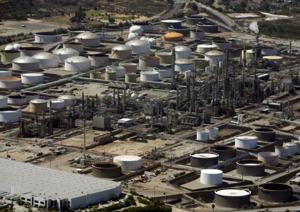Carbon intensity of U.S. power generation continues to fall but varies widely by state
(EIA) - From 2016 to 2020, the carbon intensity of U.S. power generation fell 18%, driven by a shift in the U.S. electricity generation mix away from coal and toward natural gas and renewables. The carbon intensity of power generation measures the amount of CO2 emitted to produce a unit of electricity. All but seven U.S. states decreased their carbon intensity over that five-year period, although the amount of the decrease varied widely.
In 2020, the carbon intensity of U.S. power generation averaged 854 pounds of CO2 per megawatthour (lbs of CO2/MWh), but carbon intensity varies by energy source. In 2020, the carbon intensity of coal in the United States was 2,274 lbs of CO2/MWh. Natural gas was less carbon intensive than coal at 980 lbs of CO2/MWh. Nuclear power plants and non-emitting renewables, such as hydroelectric, wind, and solar power, produce little to no CO2 emissions.
The carbon intensity of power generation varies by state because the mix of fuel sources used to generate electricity is different in different states. Notably, states also receive and deliver electricity to other states, so the carbon intensity of generation in a state does not necessarily reflect the carbon intensity of the electricity used in that state.
The states with the lowest carbon intensities of power generation either have a large share of generation from renewables or a large combined share from renewables and nuclear. In 2020, Vermont had the lowest carbon intensity of power generation at 8.4 lbs of CO2/MWh. Almost all of Vermont’s in-state electricity generation came from renewables, and Vermont brings in about 60% of its electricity from Canada.
The states with the highest carbon intensities of power generation have larger shares of in-state generation from coal- or petroleum-fired power plants than the national average. Wyoming, the state with the highest carbon intensity of power generation in 2020 (1,970.8 lbs of CO2/MWh), generated 79% of its power from coal.
Despite the large variation in carbon intensity levels, most states are reducing the carbon intensity of their power generation. Forty-three states and the District of Columbia recorded lower carbon intensity of power generation in 2020 relative to 2016.
The five states with the largest reductions in carbon intensity of power generation between 2016 and 2020 were:
- Tennessee (by 486 lbs of CO2/MWh)
- Maryland (by 477 lbs of CO2/MWh)
- Iowa (by 443 lbs of CO2/MWh)
- Kansas (by 371 lbs of CO2/MWh)
- Oklahoma (by 348 lbs of CO2/MWh)
In Tennessee, the share of in-state generation from nuclear and natural gas-fired plants increased as the share of coal-fired generation declined. In Maryland, natural gas’s share of generation increased from 15% in 2016 to 39% in 2020; coal’s share decreased from 37% to 9%. Iowa, Kansas, and Oklahoma—all located in the central wind belt—reduced their carbon intensity as wind generation continued to displace coal-fired generation.







Comments